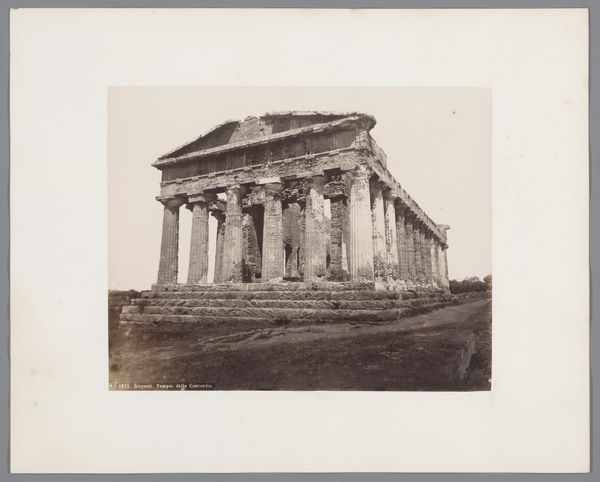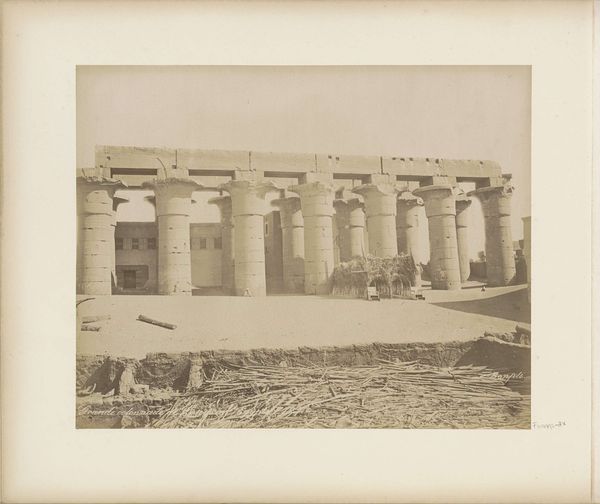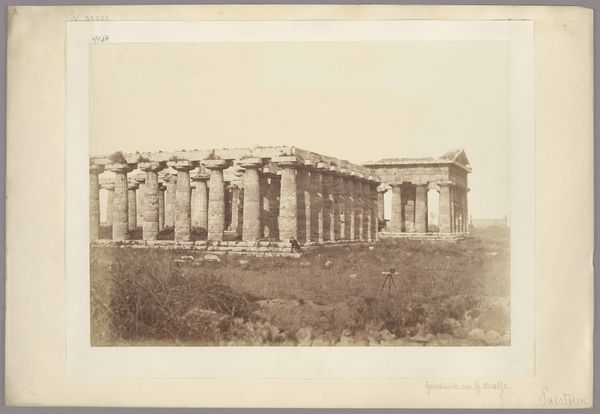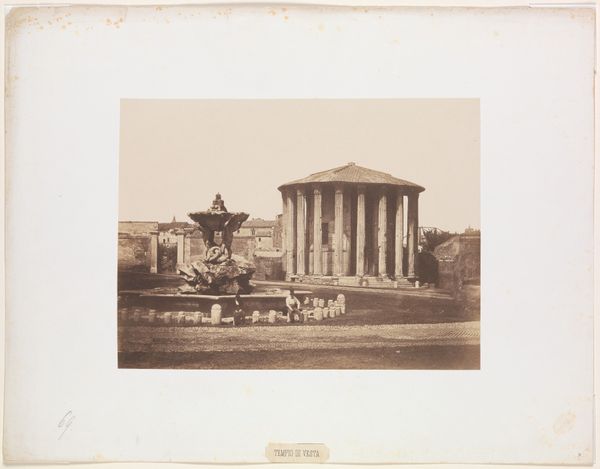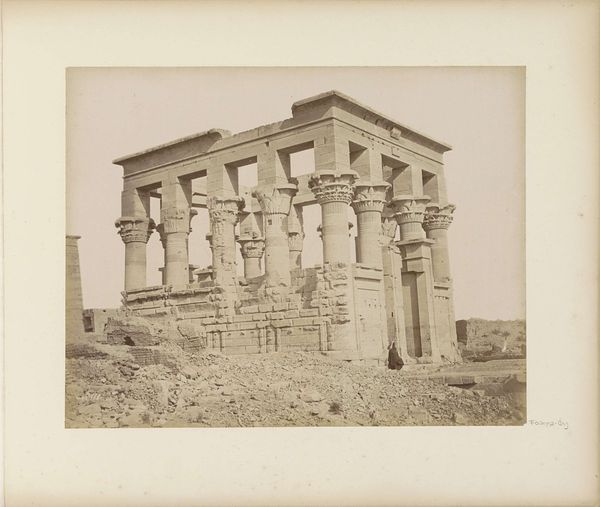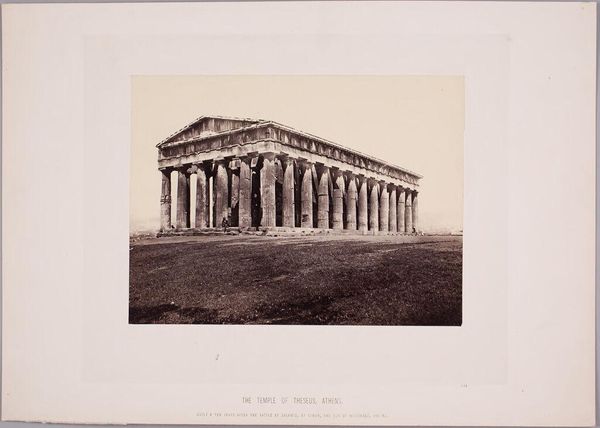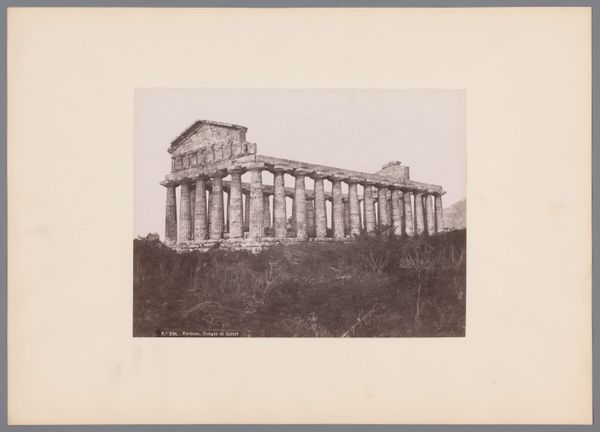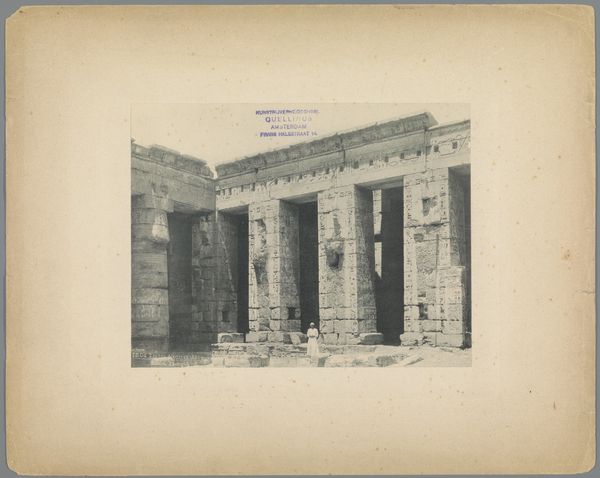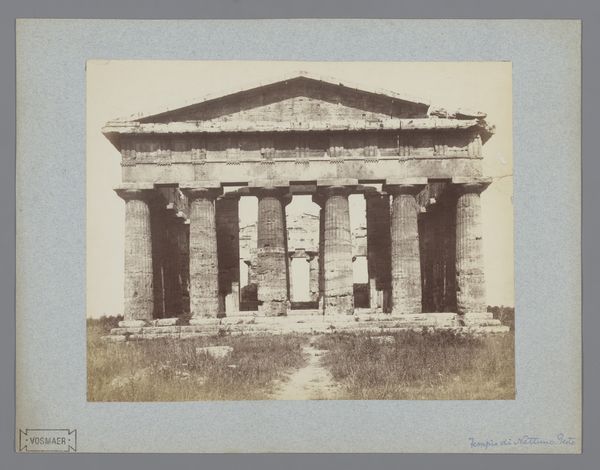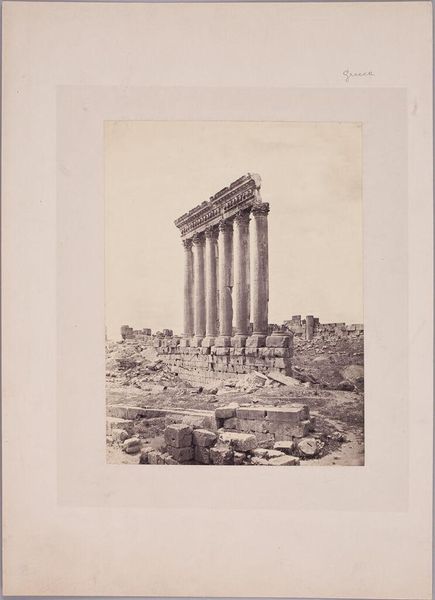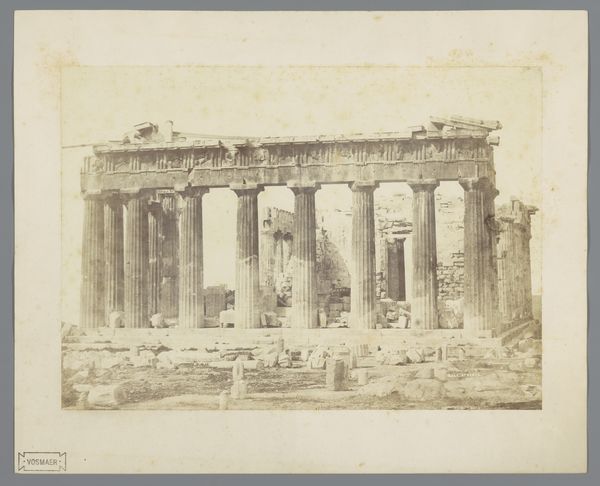
Exterieur van de tempel van Hathor op het tempelcomplex van Dendera c. 1870 - 1890
print, photography, architecture
landscape
ancient-egyptian-art
photography
ancient-mediterranean
orientalism
architecture
Dimensions: height 218 mm, width 275 mm
Copyright: Rijks Museum: Open Domain
Editor: This print, “Exterieur van de tempel van Hathor op het tempelcomplex van Dendera,” was captured by C. & G. Zangaki sometime between 1870 and 1890. It presents a very stately, though quite ruined, temple. I'm immediately drawn to the repetition of the pillars and the symmetry of the structure, which contrasts against the visible decay. How would you approach an interpretation of this image? Curator: I see an exquisite study in form and texture. Consider the stark geometry of the temple against the seemingly chaotic, rugged terrain. The architectural structure, viewed as a composition, offers a compelling interplay of verticality and horizontality. What effect does the sepia tone have on your perception of these formal elements? Editor: It lends the photograph an antique feel, highlighting the passage of time and the erosion of the structure. It also flattens the image, emphasizing the contrast between light and shadow, almost abstracting the architectural forms. Is this sense of abstraction intentional or coincidental? Curator: Whether it's intentional is perhaps less crucial than its impact. Note how the pillars are not merely structural, but feature figural elements. They invite the viewer to move from the grand, overall form to the minute details. The contrast between the pristine geometric shapes and the textured degradation, accentuated by the limited tonal range, creates visual tension. How might this tension contribute to the work's meaning? Editor: I see, it's as if the photograph itself is a study of contrasts: the geometric versus the organic, the preserved versus the decayed. I never considered that a seemingly simple architectural photograph could offer so many layers of formal analysis. Curator: Precisely! By examining these formal relationships, we uncover not just the aesthetic qualities, but also the conceptual underpinnings of the image. Considering that it is also a form of Orientalism is another way in which we can think about its composition and impact. Editor: Thank you for pointing that out!
Comments
No comments
Be the first to comment and join the conversation on the ultimate creative platform.

